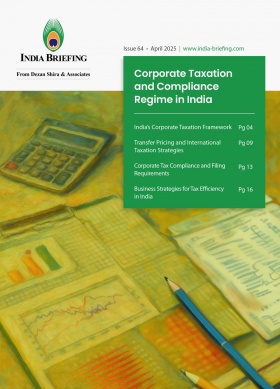India’s GAAR: Are You at Risk from Anti-Tax Avoidance Rules
India’s General Anti-Avoidance Rules (GAAR) are designed to curb aggressive tax planning by targeting arrangements that lack a legitimate commercial purpose. The rules define when GAAR applies, specify exemptions, and set out safeguards and compliance strategies to help businesses reduce the risk of disputes.
India introduced the General Anti-Avoidance Rules (GAAR) on April 1, 2017, to curb aggressive tax avoidance. These rules give tax authorities the power to review and recharacterize transactions lacking a clear operational or strategic purpose and carried out mainly to gain tax benefits. GAAR applies to both domestic and cross-border arrangements and can even override tax treaty provisions.
For businesses and investors, understanding GAAR is essential to avoid being caught by its provisions and facing significant tax consequences.
Scope and applicability of GAAR
The GAAR is intended to act as a broad safeguard against tax avoidance arrangements that cannot be effectively tackled through Specific Anti-Avoidance Rules (SAAR). While SAAR targets narrowly defined schemes—such as those involving transfer pricing manipulation, thin capitalization, or dividend stripping—GAAR takes a wider view. It is designed to address any arrangement that results in a significant tax advantage without a sound commercial justification.
GAAR applies when the expected tax benefit from an arrangement exceeds INR 30 million in a single financial year. This threshold ensures that the rules focus on substantial transactions rather than minor compliance issues. The provisions can be invoked for both domestic and cross-border arrangements, and they apply across sectors and industries.
Importantly, GAAR may be applied even if a transaction complies with the letter of the law. If the tax authorities find that the arrangement is structured primarily to reduce tax liability and that it lacks substantive business justification, they have the power to disregard or recharacterize the transaction. In practice, this means that companies and investors must assess not only whether a transaction is legally permissible but also whether it will withstand scrutiny under GAAR’s broader intent-based framework.
Identifying an impermissible avoidance arrangement (IAA)
For GAAR to apply, the arrangement in question must qualify as an Impermissible Avoidance Arrangement. This is determined through a two-step process. First, the Primary Purpose Test asks whether the main purpose—or one of the main purposes—of the arrangement is to obtain a tax benefit. If the answer is yes, the next step is to examine whether the arrangement meets any of the secondary conditions, also called the “tainted element” tests.
The tainted element tests are broad and focus on the nature of the transaction:
- Non-arm’s-length terms: The arrangement creates rights or obligations that would not exist between parties dealing independently and on commercial terms.
- Misuse or abuse of the law: The structure exploits provisions of the Income-tax Act in a way that goes against their intended purpose.
- Lack of commercial substance: The transaction offers little or no change in business risk or cash flows other than a tax benefit. This can include practices such as round-tripping funds, using accommodating parties, or relocating assets without a valid business reason.
- Not ordinarily used for bona fide purposes: The transaction is structured in a way that is unusual for genuine commercial dealings.
Common examples of arrangements that may attract GAAR include routing investments through low-tax jurisdictions without any operational need or structuring ownership to disguise the real source or control of funds. These patterns often signal that the main objective is to secure tax advantages rather than to achieve a legitimate business purpose. Businesses should therefore review transactions not only for legal compliance but also for whether they might be viewed as failing one or more of these tests.
ALSO READ: Double Taxation Avoidance Agreements (DTAAs) and Your India Investment Strategy
Transactions outside GAAR’s purview
While GAAR casts a wide net, there are specific situations where its provisions do not apply. One important exemption is grandfathering. Investments made before April 1, 2017, are protected from GAAR scrutiny, including bonus shares or split shares that arise from such holdings. This ensures that legitimate, pre-existing investment structures are not disturbed.
GAAR also does not apply to arrangements approved by a court or tribunal, provided that the tax implications were explicitly considered in the approval process. Similarly, rulings from the Authority for Advance Rulings (AAR) are binding on the tax authorities for the specific applicant and protect the approved arrangement from being challenged under GAAR.
Foreign Portfolio Investors (FPIs) enjoy an exclusion if they meet prescribed conditions, such as compliance with applicable regulations and avoiding structures designed solely for tax benefits. Furthermore, arrangements involving jurisdictions chosen for genuine commercial reasons—such as proximity to markets, operational efficiency, or strategic partnerships—are not automatically targeted, even if they also offer tax advantages.
These exclusions highlight the importance of intent and context. If a transaction or investment structure can demonstrate a legitimate operational or strategic purpose, it is less likely to trigger GAAR provisions. However, businesses should still document the decision-making process to support the non-tax motivations behind such arrangements.
Administration, procedure, and safeguards
To address industry concerns about overreach, the Central Board of Direct Taxes (CBDT) has issued several clarifications on how GAAR will be applied. GAAR is intended for use only in cases of highly aggressive tax avoidance. Before it can be invoked, the arrangement must be reviewed and approved by both the Principal Commissioner of Income Tax and an independent Approving Panel, which is chaired by a judge of a High Court.
CBDT has also clarified that Limitation of Benefits (LOB) clauses in tax treaties may reduce the scope for GAAR to apply, provided they adequately address the avoidance risk in question. There is no provision for automatic penalties under GAAR; whether a penalty is imposed will depend on the specific facts of the case. Another safeguard is the principle of consistency—if an arrangement has been accepted in a prior year and there is no material change in facts or circumstances, GAAR should not be applied in later years.
The assessment process involves multiple checks. It begins when the assessing officer identifies a potential case and refers it to the principal commissioner for review. If the Commissioner believes GAAR could apply, the case may be escalated to the approving panel. This panel has the authority to examine records, request additional information, and issue binding directions. Once a decision is made, the tax consequences are applied, which can include recharacterizing the transaction, denying treaty benefits, or reallocating income and expenses.
These procedural safeguards aim to ensure GAAR is applied in a fair and consistent manner, while ensuring businesses have an adequate opportunity to respond before GAAR is applied.
ALSO READ: Avoid Excess Tax Deductions in India: NRI Guide to Lower TDS Certificates
Business implications and risk mitigation
One of the most important considerations for companies and investors is that GAAR can override tax treaty provisions under Section 90(2A) of the Income-tax Act. This means that even if a treaty appears to grant certain tax benefits, those benefits may be denied if the arrangement is found to be an impermissible avoidance arrangement.
Certain cross-border structures are particularly vulnerable, especially those involving jurisdictions viewed as tax-favored, which may face heightened scrutiny. Businesses should be prepared to show that the structure was selected for substantive business needs rather than solely for tax reduction.
Maintaining robust documentation is critical. Records should clearly show the commercial purpose behind a transaction or investment structure, including board resolutions, feasibility studies, and correspondence with business partners. This evidence can be crucial in proving that an arrangement has real economic substance.
Practical risk management strategies include:
- Conducting a GAAR risk assessment before finalizing major transactions.
- Seeking advance rulings from the tax authorities where possible.
- Aligning transaction structures with genuine commercial objectives rather than purely tax considerations.
- Periodically reviewing holding and financing arrangements to ensure they remain commercially justified and compliant with current tax rules.
By adopting a proactive approach to compliance, businesses can reduce the risk of disputes and potential penalties. This not only safeguards against GAAR challenges but also supports transparent and sustainable tax planning practices.
About Us
India Briefing is one of five regional publications under the Asia Briefing brand. It is supported by Dezan Shira & Associates, a pan-Asia, multi-disciplinary professional services firm that assists foreign investors throughout Asia, including through offices in Delhi, Mumbai, and Bengaluru in India. Dezan Shira & Associates also maintains offices or has alliance partners assisting foreign investors in China, Hong Kong SAR, Vietnam, Indonesia, Singapore, Malaysia, Mongolia, Dubai (UAE), Japan, South Korea, Nepal, The Philippines, Sri Lanka, Thailand, Italy, Germany, Bangladesh, Australia, United States, and United Kingdom and Ireland.
For a complimentary subscription to India Briefing’s content products, please click here. For support with establishing a business in India or for assistance in analyzing and entering markets, please contact the firm at india@dezshira.com or visit our website at www.dezshira.com.
- Previous Article Corporate Social Responsibility in India
- Next Article Series A Funding Guide: Compliance & Audit Requirements for Indian Startups








